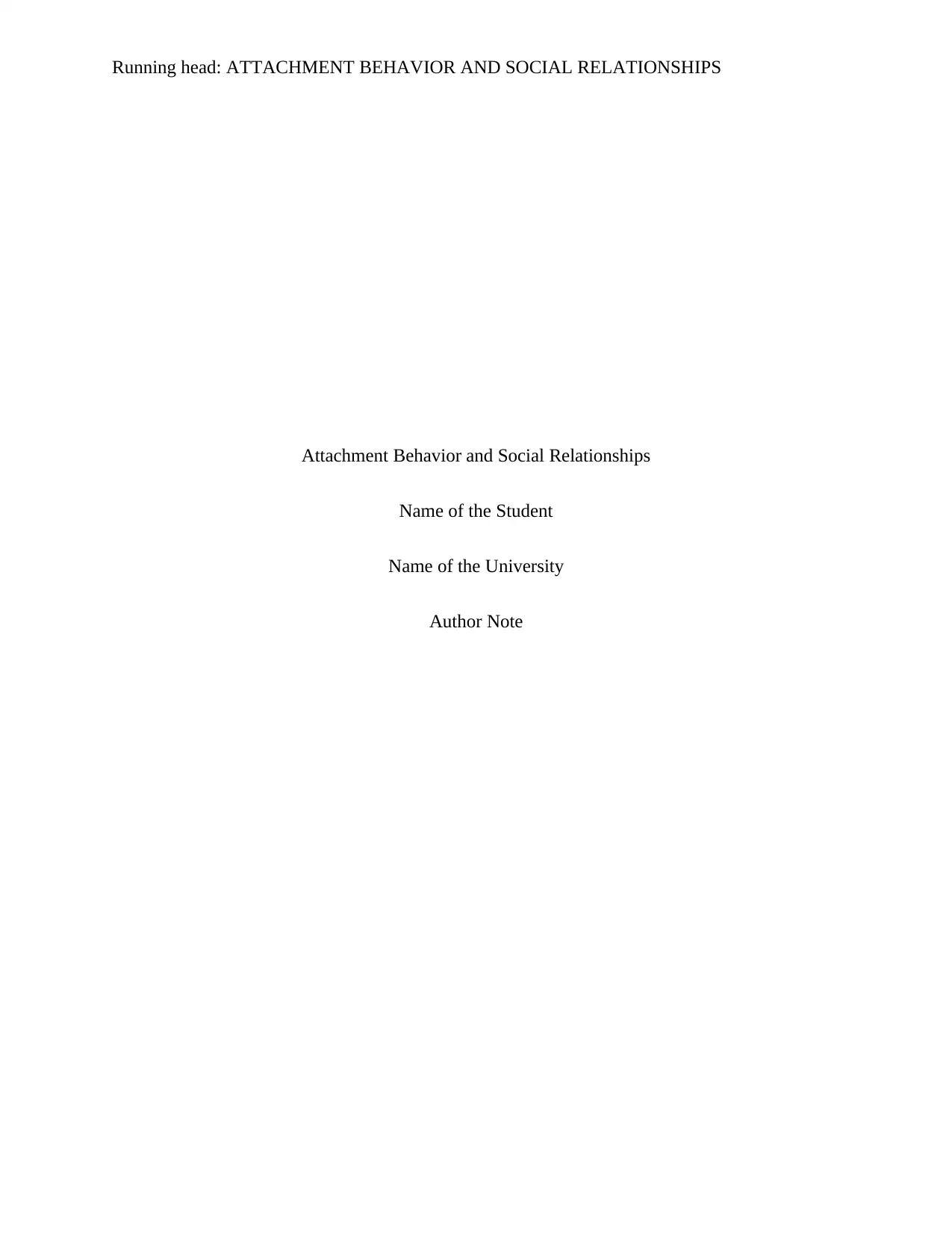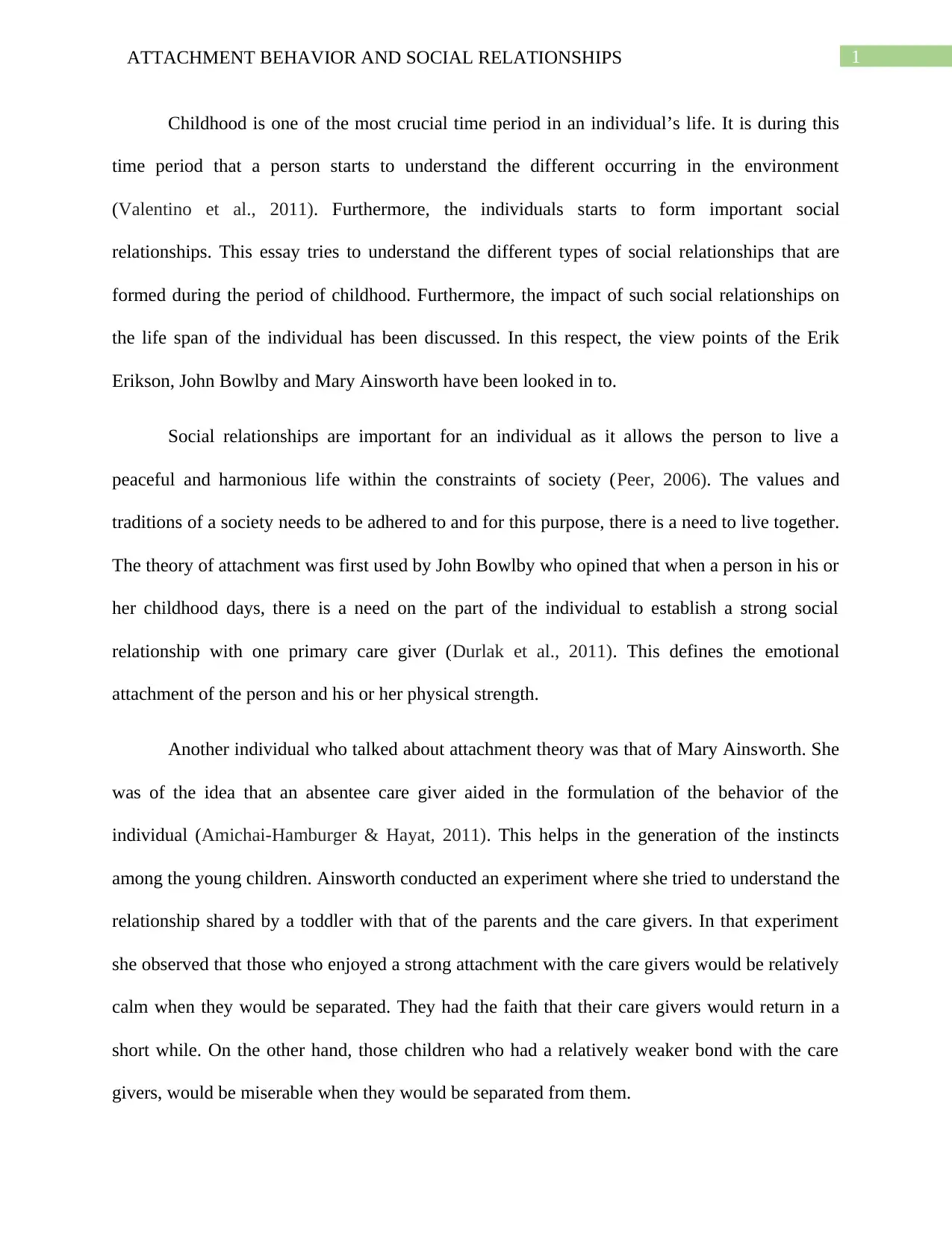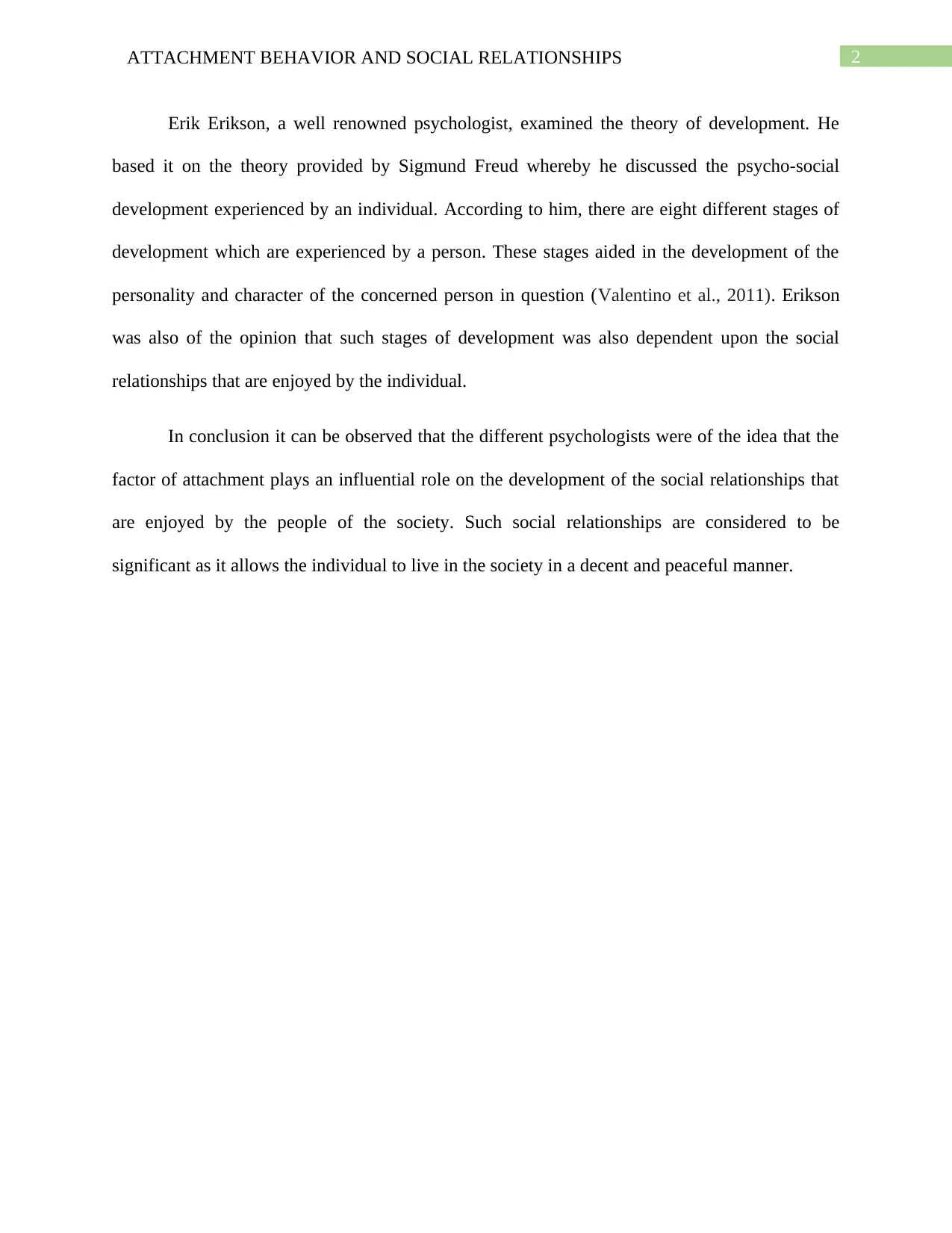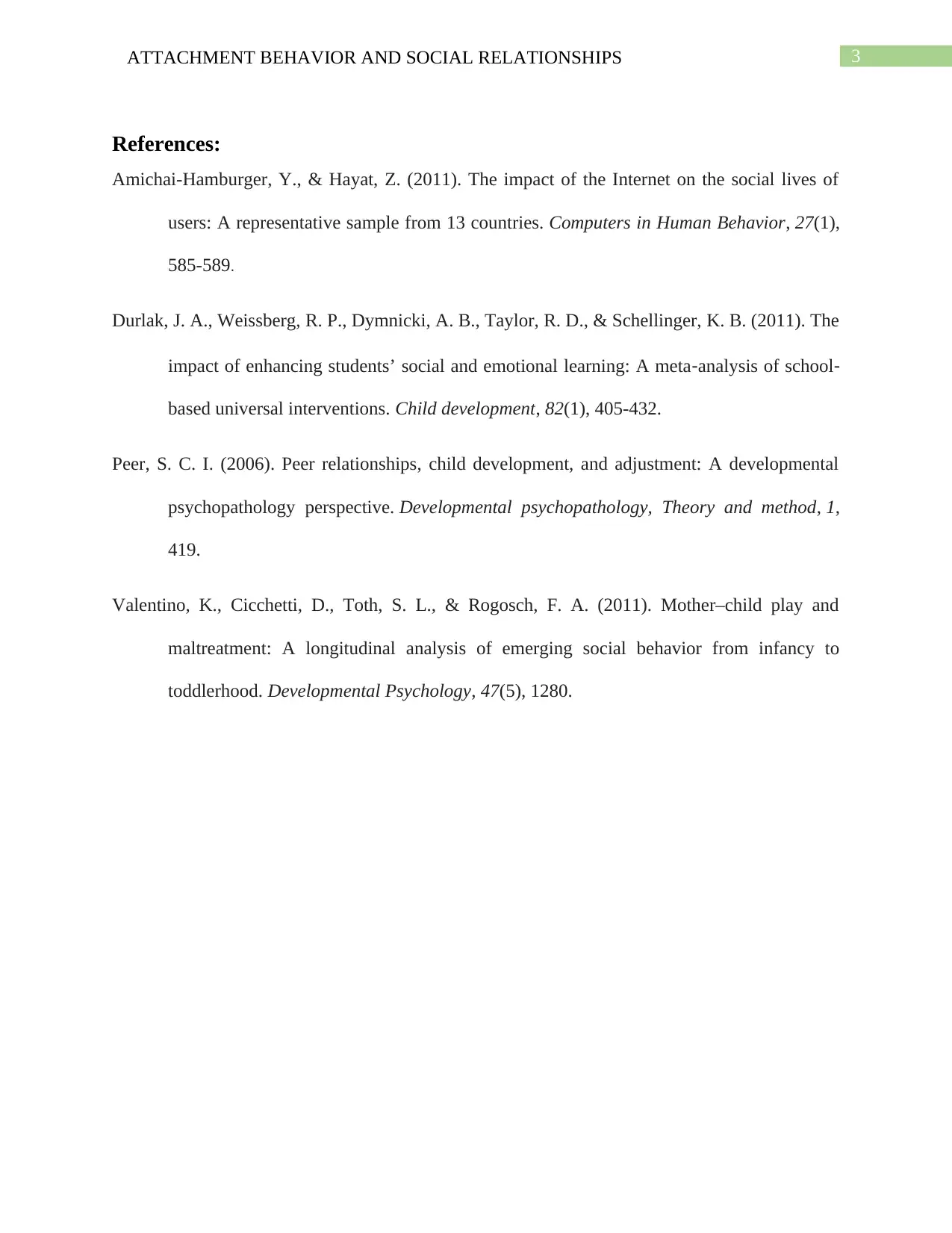Attachment Behavior, Social Relationships, and Development Theory
VerifiedAdded on 2023/03/21
|4
|787
|32
Essay
AI Summary
This essay examines the crucial role of attachment behavior in shaping social relationships during childhood, drawing upon the theories of Erik Erikson, John Bowlby, and Mary Ainsworth. It discusses how early social relationships, particularly with primary caregivers, influence an individual's emotional and social development, impacting their ability to form healthy relationships later in life. The essay highlights Ainsworth's experiment, demonstrating how secure attachment leads to confidence and calmness in children, while insecure attachment results in distress during separation. Furthermore, it integrates Erikson's stages of psychosocial development, emphasizing the interdependence between social relationships and personality development. Ultimately, the essay concludes that attachment significantly shapes social interactions and overall well-being within society.
1 out of 4











![[object Object]](/_next/static/media/star-bottom.7253800d.svg)